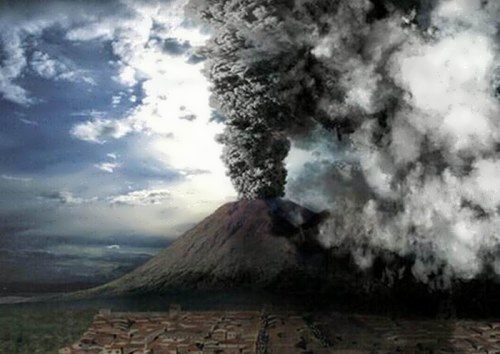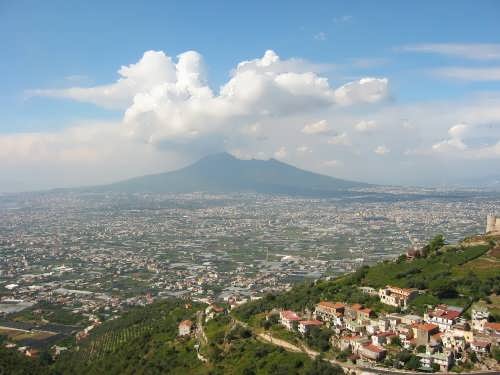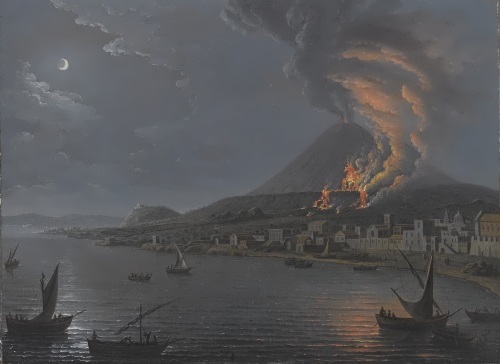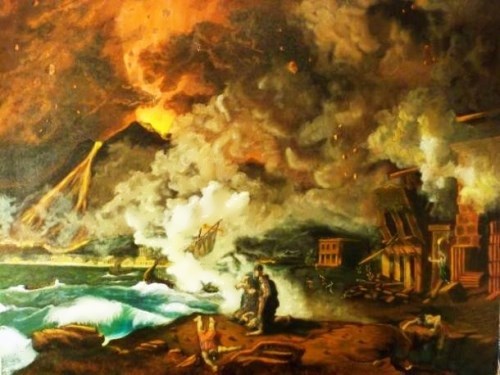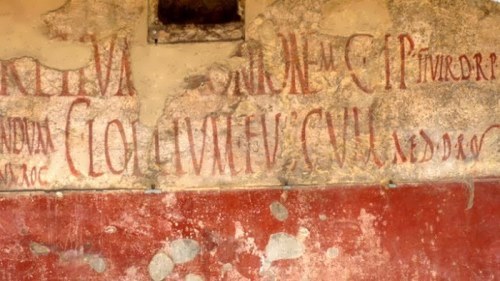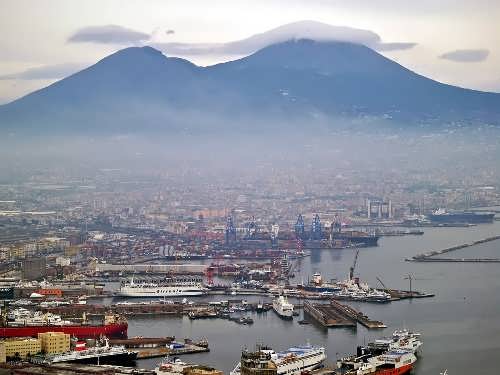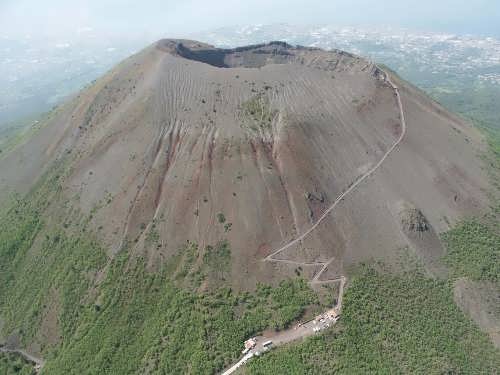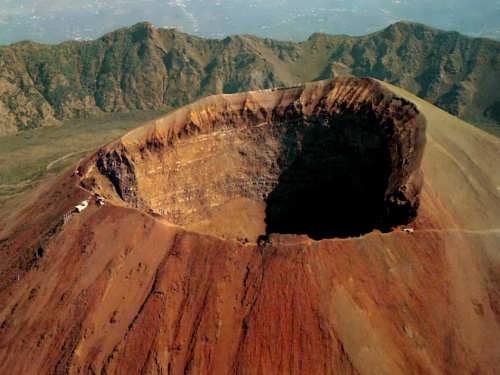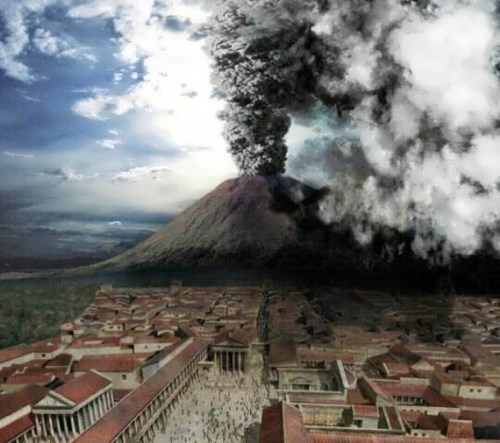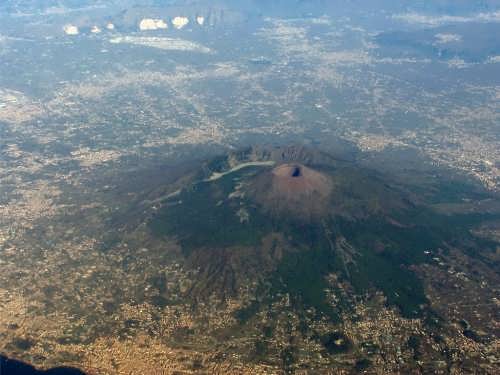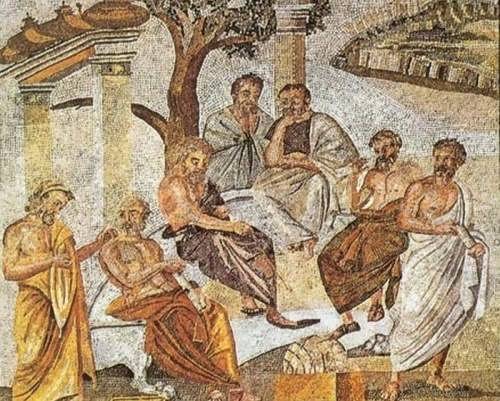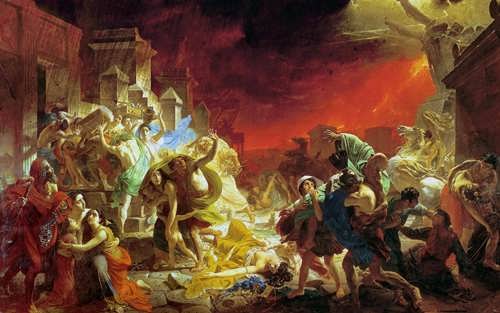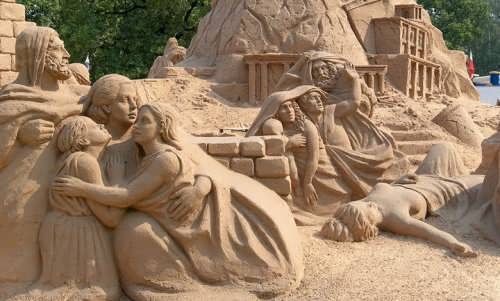Pompeii and Herculaneum
Pompeii and Herculaneum were two ancient Roman towns destroyed by the eruption of Mount Vesuvius in 79 CE. Mount Vesuvius, which had formed at least 17,000 years earlier, was one mile away.
People lived in the Pompeii region in prehistoric times. The Romans took control of Pompeii in about 290 BC. The entire region along the coast of the Bay of Naples became a popular vacation destination for wealthy Roman citizens.
Around one o’clock in the afternoon on August 24, AD 79 Mount Vesuvius erupted and spewed 18-20 feet of ash and cinders that buried the town and asphyxiated and mummified most of the 20,000 people in Pompeii. The intense ash clouded the Sun for several days and created a tsunami in the Bay of Naples. The town, which had been a vacation resort for Rome’s nobility, was completely covered by ash and remained buried for the next 16 centuries.
Pliny the Younger described the event in The Letters. He witnessed the phenomenon with his uncle from 15 miles away.
The first serious excavations at Pompeii took place under the patronage of King Charles VII.
From 1863 to 1875 Giuseppi Fiorelli made plaster casts of the 2,000 skeletons found in Pompeii.
Herculaneum, a small town between Pompeii and Naples, known as Ercolano since 1969, was also decimated by the eruption. On August 24, 79 C.E., the town was obliterated by 75 feet of disastrous poisonous air, gases, lava ashes, small stones. Herculaneum was rediscovered in 1738 after a huge stash of impressive statues was found there. The exquisite buildings, mosaics, paintings, and art indicate that Herculaneum was materially and culturally superior to Pompeii.
Today Pompeii is one of the most important archaeological sites in the world. It is a UNESCO World Heritage Site and is visited by thousands of tourists every year.
It is known that the eruption of Mount Vesuvius, which destroyed Pompeii, was catastrophically strong. Modern scholars have suggested that it was 500 times more powerful and destructive than the atomic bomb dropped on Hiroshima.
